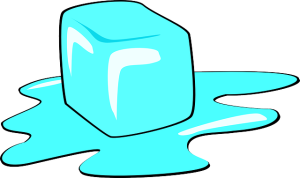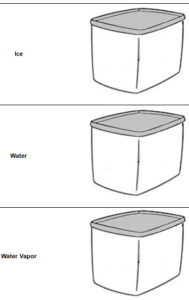Purpose
[stextbox id = “info”]To help the teacher and students become aware of students’ initial thinking about how matter changes when it changes phase.
[/stextbox]Description
[stextbox id = “info”]As students watch, put an ice cube in an airtight container (for example, Tupperware) and put the lid on. Tell students the container will stay where it is in the classroom all day. Ask them to imagine that they have super strong glasses that are more powerful than the strongest microscope. Tell them to draw what they would see inside the container when the water is a solid (ice), a liquid, and vapor using this task sheet. [Task instructions for pilot teachers.]
[/stextbox]Questions to Ask Students
[stextbox id = “info”]Describe what’s in your drawings. What does each part represent?
[/stextbox]Student Thinking
[stextbox id = “info”]Some students’ drawings will represent water as continuous (that is, they will not draw water particles), even in the vapor phase (Benson, Wittrock, & Baur, 1993; Nakhleh & Samarapungavan, 1999; Renström, Andersson, & Marton, 1990; Séré, 1986). If students draw particles, look for:
- Size and shape of particles in different states. Some students believe size and shape change as the states change (Aydeniz & Kotowski, 2012; Özmen, 2011; Özmen & Kenan, 2007; Tsai, 1999). For example, some think water particles are bigger in the vapor phase than the solid phase.
- Number of particles. Students may believe that the number of particles changes as the states change. For example, some students believe that the particles disappear when water evaporates (Lee et al., 1993; Osborne & Cosgrove, 1983; Russell, Harlen, & Watt, 1989; Tytler, 2000).
Implementation Tips
[stextbox id = “info”]- The drawings will help the teacher understand what students think about matter at the beginning of the pathway and be alert for opportunities to challenge their thinking.
- Use a container that students can’t see through so they will have to use their imagination.
- If resources are available, this experience could be done by students in pairs or small groups rather than as a demonstration.

